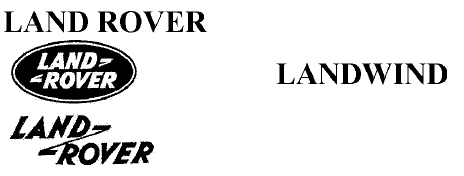Not considered in isolation
OHIM Second Board of Appeal 15 april 2011, Zaak R 1689/2008-2 (Land Rover tegen LWMC Ltd.)
 Met dank aan Neeltje Beens, BRight advocaten
Met dank aan Neeltje Beens, BRight advocaten
Wellicht ten overvloede. Merkenrecht. Oppositie. Ouder Woord- en beeldmerken LANDROVER tegen aanvrage LANDWIND. Board of Appeal oordeelt in navolging van Opposition Division dat vorderingen zowel op grond van 8(1)(b) als artikel 8(5) CTMR wordt afgewezen. Beginwoord, gevormd door 4 letters, worden door consument niet apart, maar als onderdeel van geheel gelezen. Geen verwarring tussen de merken, zelfs niet ter onderscheiding van identieke goederen op dezelfde markt. LANDWIND wordt als merk ingeschreven voor alle aangeduide goederen en diensten.
59 In the present case, the earlier word marks consist of two words, the first one ('LAND') being identical to the beginnings of the word mark applied for ('LANDWIND'). However, these marks have a different structure and composition. The earlier figurative trade marks also have a different nature, and consequently differ in the figurative element, when compared to the mark applied for. It has already been found aboven (see para. 32) that the signs at issue are not similar. The fact that the word 'LAND' is not an element on its own in the mark applied for as well as the different composition of the marks, introduce important visual and phonetic differences in the overall impression of the marks. Thus, the similarities between the conflicting trade marks cannot enable consumers to establish a link between them since the 'LAND' element of the earlier marks has no independent distinctive rol in the sign applied for. The beginning 'LAND' in contested mark will not be considered by the consumer in isolation but as an integrating part of the sole word 'LANDWIND'. Moreover, as explained above, the enhanced distinctiveness of the earlier marks affects the mark 'LAND ROVER' as a whole and not the 'LAND' element alone. Consequently, the Board considers that the mere coincidence of the marks in their beginnings based on these four letters, taking into account their role in the overall impression of the signs, cannot lead to the conlude that the publish will establish a link between the marks, even when they identify identical goods on the same market (see for this reasoning, judgment of 17 February 2011, T-10/09, 'F1 Live', para 67)


























































































